There’s so much to see and do in Copenhagen that you could easily fill up five days.
If you have less time, however, and want to pack in some full days, you can hit many significant sites.
Below is the three-day itinerary we’ve created that will take you to these sites.
We’ve grouped stops so you’re making the most of your time.
And we’ve included museums, palaces, gardens, neighborhoods, and more, each of which will give you a good cross-section of what Copenhagen offers.
You could also take a market tour, go on a pub crawl or head to one of many free museums.
COPENHAGEN: DAY 1
Here is our suggested itinerary for your first day in Copenhagen.
- Christiansborg Palace
- Strøget
- Nyhavn
- Canal Tour
- Little Mermaid Statue
- Frederick’s Kirke
- Royal Danish Theatre
Our free walking tour of the city center covers some of these locations.
Christiansborg Palace | Christiansborg Slotspad
You might recognize Christiansborg Palace from exterior shots from the famous Danish TV show Borgen, a nickname for the palace.
This is the seat of the Danish Parliament, the Danish Prime Minister's Office, and the Supreme Court of Denmark, making it home to the three supreme powers of the Danish political system.
In fact, it is the only building in the world to house all three branches of government.
The building that exists today is actually the third version of the palace, with two others having been constructed previously.
Three eras of Danish architecture are on display due to those reconstructions including Baroque, Neoclassicism, and Neo-baroque.
The equestrian statue in front of Christiansborg Palace depicts Christian IX. It was designed by Anne Marie Carl-Nielsen, wife of composer Carl Nielsen.
If you’re interested in seeing the interior, tickets are available to the various buildings making up the palace.
You can visit the Christiansborg Castle Church for free.
Access to the viewing platform in the Tower is free as well. It is the tallest tower in the city so offers some of the best views of Copenhagen.
Strøget
This picturesque pedestrian-only street is chock full of specialty stores, restaurants, cafes, souvenir shops, and more.
It sits in the center of Copenhagen and is lined with many beautiful buildings and some architectural landmarks.
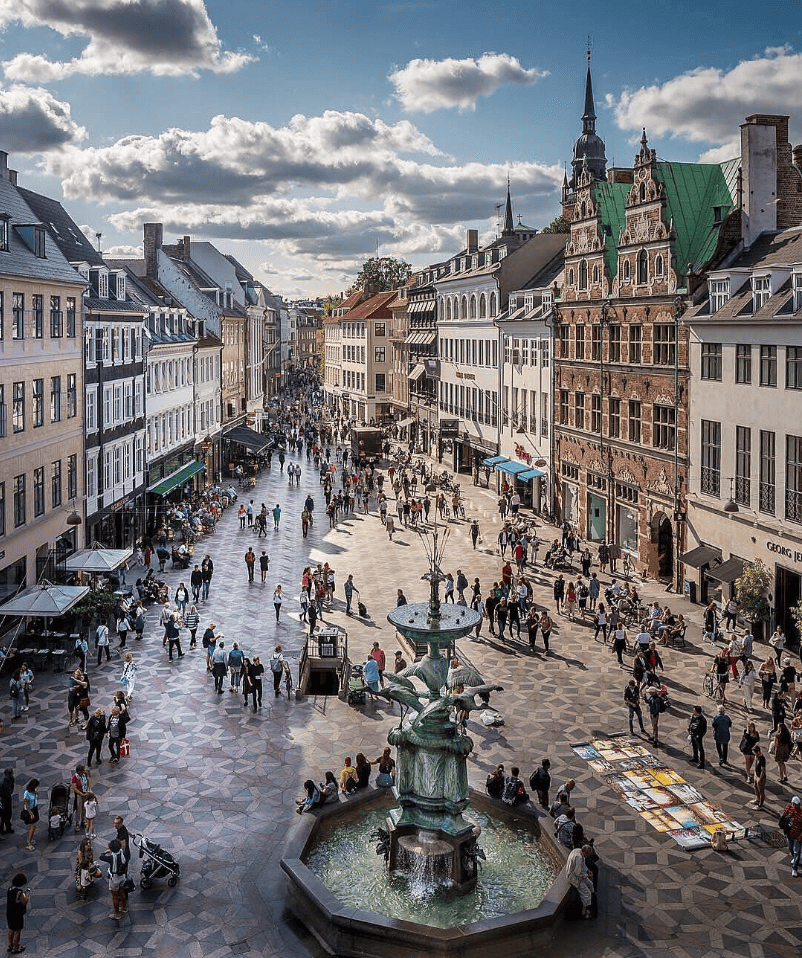
You’ll find a creative crowd there, with artists, musicians, and street performers entertaining folks along the street.
It’s also a good spot to catch a train, bus, or metro, as they all have stops near Strøget.
Nyhavn
This district of Copenhagen is one of the most photographed locations in the city.
It is lined with bright and colorful 17th-18th century townhomes dating back to 1681.
This neighborhood inspired Hans Christian Anderson who lived here on and off over his lifetime.

Due to its accessibility by boat, the area was frequented by fishermen and ships carrying cargo, making it an important economic port.
Over the years, Nyhavn developed a rather seedy reputation thanks to its many bars serving beer and drinks to sailors and prostitutes.
Over time, as ocean-going ships grew larger, fewer came to port in Nyhavn.
That meant there weren't as many sailors visiting and the reputation of the area gradually improved.
Canal Tour
Since you’re in Nyhavn, this is the perfect time to take a leisurely cruise through Copenhagen’s canals.
You’ll find it a great way to view some of the city’s colorful and picturesque buildings.
You’ll also be able to catch sight of famous landmarks such as the Little Mermaid Statue (see below); the Danish Parliament building; Christiansborg Palace, the royal residence; Amalienborg Palace; the Copenhagen Opera; and much more.
While navigating through the canals, the operators will share more about the city’s past and present and its architecture.
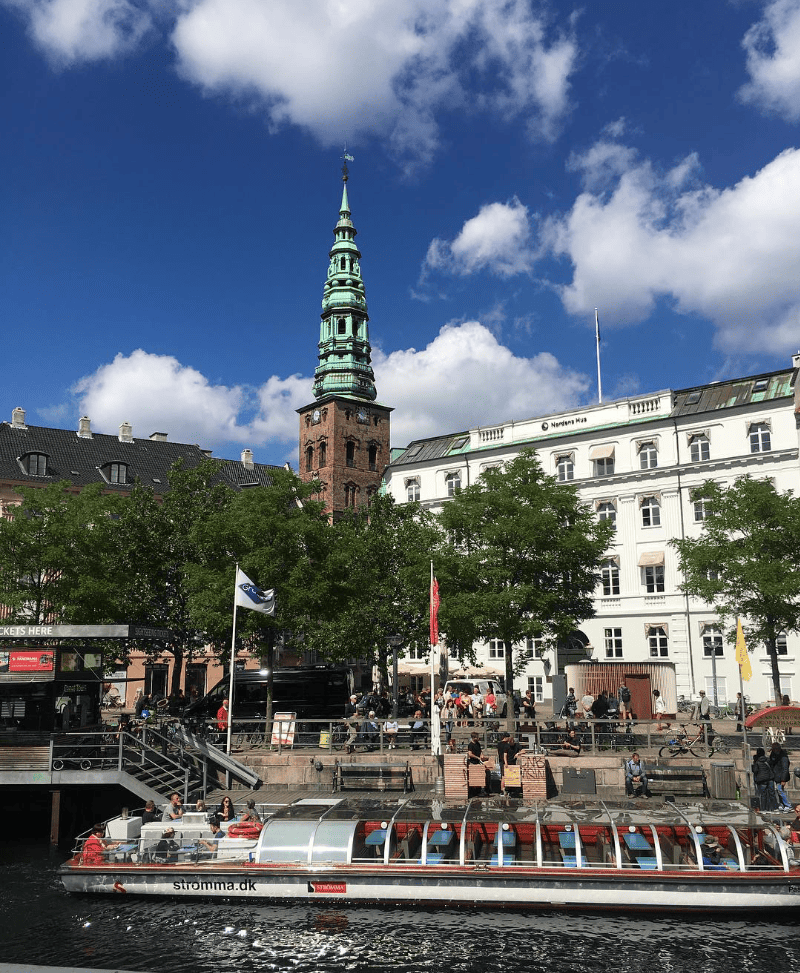
Depending on the boat, you could be offered either live or recorded commentary and other amenities.
A boat tour is a great way to get to know a bit more about Copenhagen’s rich history while surrounded by the beauty of the city’s waterways.
You can purchase tickets to a boat tour here.
It’s also available on some of the discount cards, including The Copenhagen Card.
Little Mermaid Statue
Whether you’re visiting Copenhagen with children or you just love the story of Danish author Hans Christian Anderson, you owe it to yourself to see this beautiful statue by the water at the Langelinie Promenade.
This bronze statue, created by sculptor Edvard Eriksen in 1913, is one of the most iconic landmarks in Copenhagen
The Little Mermaid sits on a rock in the harbor, not far from the shore.
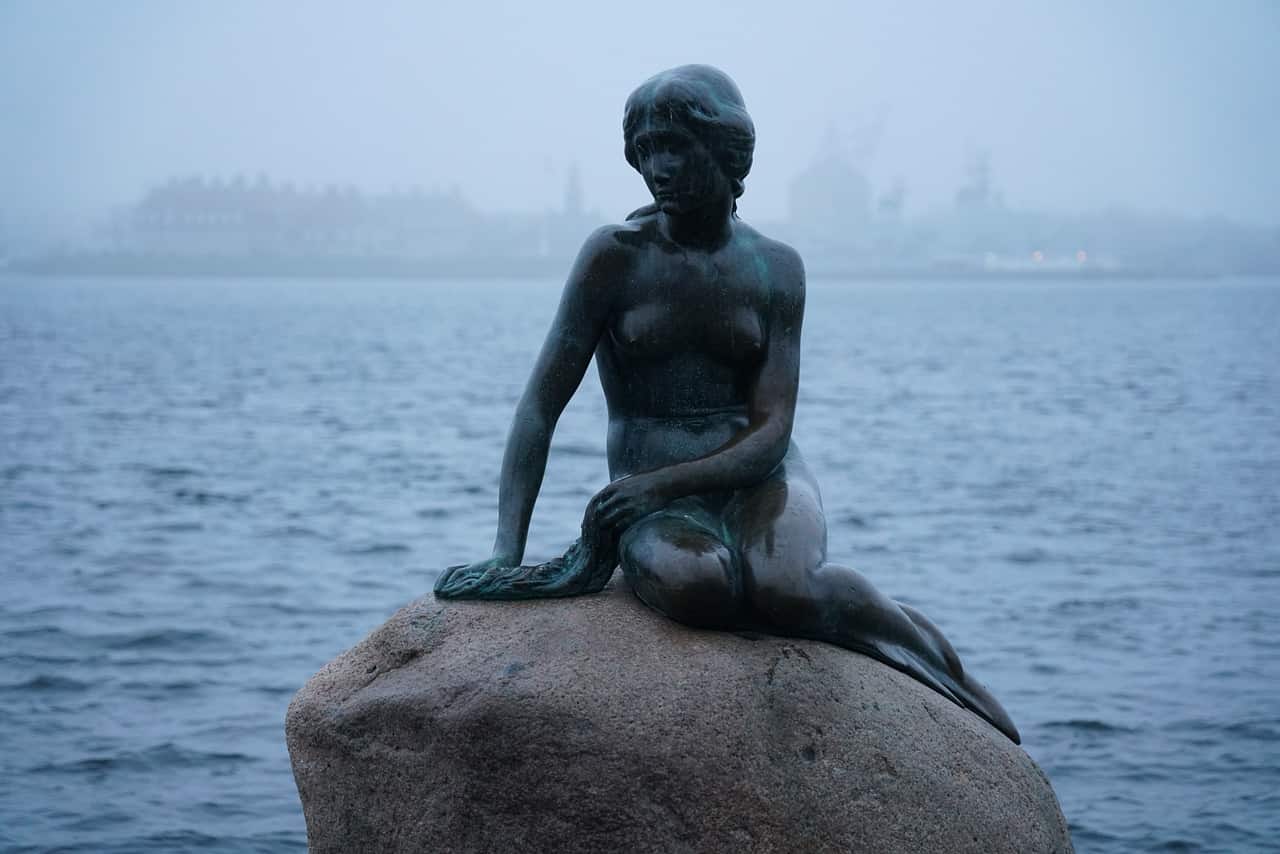
From her spot, she can see the gorgeous Cherry Blossoms in the park in the springtime.
Sadly, she has been the target of vandals who have more than once beheaded her, blown her up, and covered her in paint.
She survives though, and will surely be returned to her spot should the same happen again to this beloved icon of Copenhagen.
Note that if you want to see a statue of Hans Christain Andersen himself, you can find him on H.C. Andersen's Blvd, not from the Hans Christian Andersen Experience, part of Ripley's Believe It or Not.
Frederik's Church | Frederik's Kirke
Also known as the Marble Church, this church located in central Copenhagen is one of the most beautiful in the city.
It’s designed in the Rococo style and has an impressive dome, the largest in Europe.
Delays in the church’s construction meant that although the first stone was laid in 1749, it wasn’t consecrated until 1894!
Inside you’ll mable from Bergen, Norway, although not as much as one would expect, due to financial challenges involved in the delays of construction.
There are also bronze statues of prominent Danish figures and statues of other characters from the Bible.
There’s a gorgeously embellished pipe organ, a crucifix hung against blue azure, artwork, and other ornamentation.
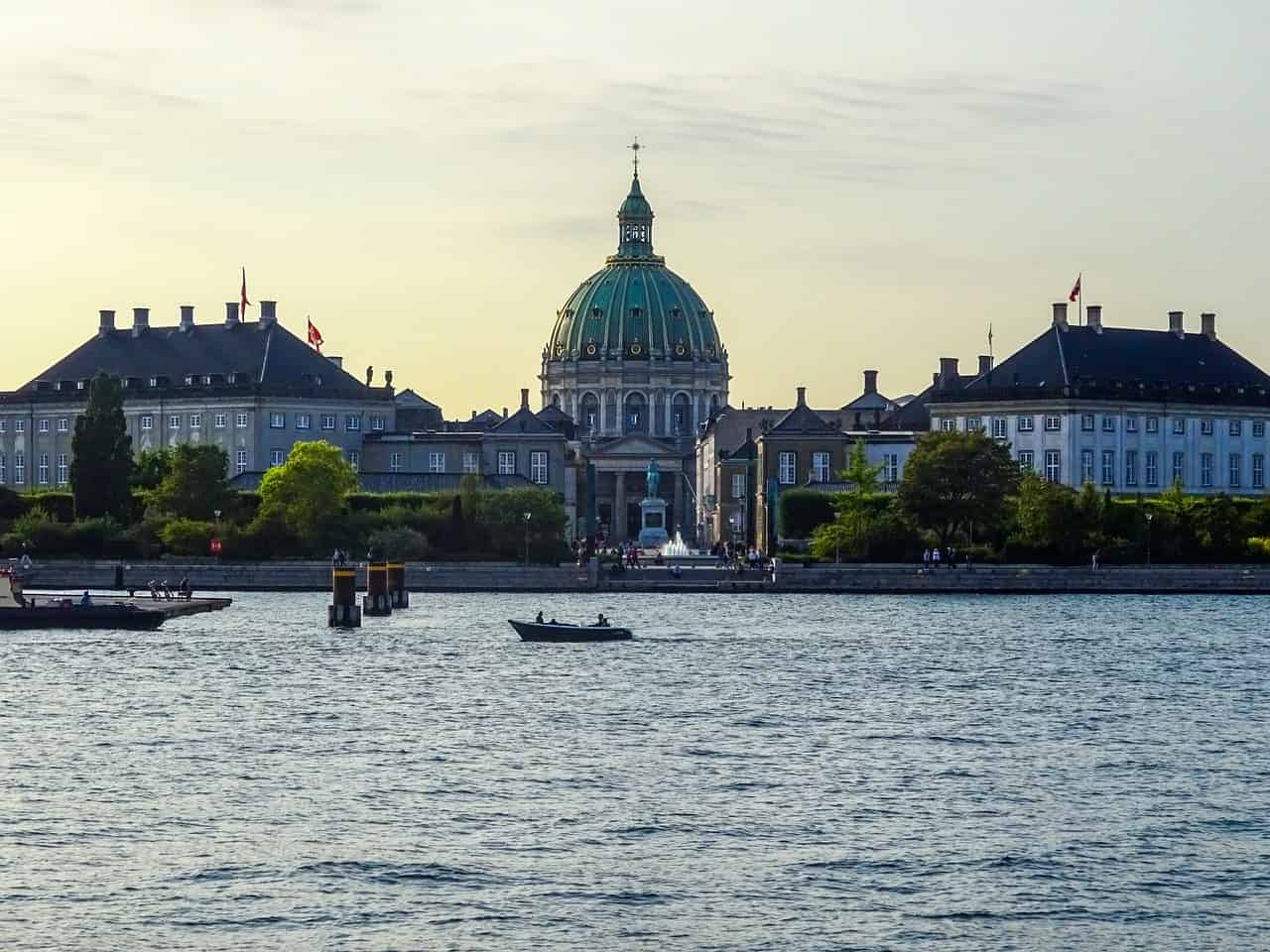
The church was intended to be the private church of the royal family, and today is it open to all and functions as an Evangelical Lutheran church.
It’s free to enter.
You can also climb to the top of the church for great views of the city with a pre-booked tower tour.
Royal Danish Church | Det Kongelige Teater
This performing arts institute is home to a trio of Royal Theatre buildings.
Here you'll find the Royal Theatre Company, the Royal Danish Ballet, and the Royal Danish Orchestra.
It first served as the theatre of the king, dating back to 1748 when it was the center of Danish cultural events.
Søren Kierkegaard and Hans Christian Andersen were frequent visits here. And of course the Queen visits from time to time.
Today, it's open to the public and hosts a variety of artistic performances.
Ticket prices range from somewhat affordable to quite expensive.
Just a reminder that our free walking tour of the city center covers some of these locations.
COPENHAGEN: DAY 2
Here is the itinerary for your second day in Copenhagen.
- National Museum of Denmark
- Hans Christian Anderson Statue/Experience
- The Round Tower
- Rosenborg Castle
- Botanical Gardens
- Kastellet
- Gefion Fountain
Our free Copenhagen Renaissance walking tour covers some of these locations and more.
National Museum of Denmark | Nationalmuseet
The Nationalmuseet is Denmark’s largest museum and is part of a network of 20 important landmarks and museums dotted throughout Denmark.
It resides in an 18th-century building that sits in the center of Copenhagen.
This museum provides an overview of Danish history, covering its culture, fine arts, archeology, and more.

While you’ll find items from the popular Viking Age, there are also collections covering eras leading back to the Stone Age.
Their exhibit includes such treasures as the Turndholm Chariot of the Sun, the Gundestup cauldron, and the Holy tomb.
It also houses a Royal Danish Collection with regalia, portraits, and clothing related to the Danish royalty.
Its ethnographic collection includes pieces “from North America, South and Central America, Africa, Asia, Oceania, and the Arctic - of the American Indians, the Inuit and Yupiit, Mongolian and Maori peoples - and from the world religions of Buddhism and Hinduism.”
Tickets can be purchased here.
Access can also be had through The Copenhagen Card.
Hans Christian Andersen Experience & Statue
Denmark’s famous son, poet and author Hans Christian Anderson, is remembered in this museum.
His fairy tales are beloved around the world with works such as The Little Mermaid, The Emporer’s New Clothes, and The Ugly Duckling captivating generations of readers.
At the Hans Christian Andersen Experience, you’ll learn more about his life, one that started rather humbly.
Although there were limited opportunities for him, his potential was recognized.
Through education and travel, he was inspired and eventually grew into a writer who explored identity, growth, love, and more.
The museum covers his life and the experiences that influenced him.
The bronze statue in his likeness stands nearby, on H. C. Andersens Blvd. in City Hall Square, across from Tivoli Gardens.
The Round Tower | Rundetaarn
This 17th-century cylindrical tower was designed by Danish architect Hans van Steenwicnkle the Younger.
It was planned to be an observatory, and today is the oldest functioning one in Europe. Denmark had a reputation in that field due to the work of astronomer Tycho Brahe.
Today one can find a Library Hall, used for exhibits and cultural events.
It’s also where the gift shop resides. Interesting note, Hans Christian Anderson used the library here back in the day.
There’s also a Bell Loft, where church bells used to ring, and an exhibit there that talks about the history of the tower.
And a Planetarium that shows current planetary positions.

And attracting most visitors, in the Spiral Ramp that runs within the tower, wrapping it more than 7 times.
Guests can take this to the top, to see the various sites along the way before ending up at the Planetarium.
Tickets are needed and can be purchased online. Access is free with The Copenhagen Card.
Rosenborg Castle | Rosenborg Slot
Built in 1606 as a country summerhouse, Rosenborg Castle is one of the newer castles in Copenhagen.
It’s also one of the finest examples of the Dutch Renaissance style of architecture.
It was used as a royal residence until the early 1700s, and then again two other times since then, the last time was in 1801.
Today the castle houses a museum that exhibits the Royal Collections, which are artifacts from throughout the history of royal Danish culture from the 16th - 19th centuries.
You’ll find the Crown Jewels and Danish Crown Regalia, the coronation chair, the coronation carpet, the throne, and many other notable items.
Tickets are required to enter the castle. Access is free with The Copenhagen Card.
You can also spend some time walking around and enjoying the fountain, playground, and King’s Garden (which includes a rose garden and tree-lined paths perfectly cut and formed in straight lines to match Danish architecture) for free.
Botanical Gardens | Københavns Universitet Botanisk
These lovely gardens, a calm space in a busy city, are part of the National History Museum of Denmark at the University of Copenhagen.
The garden has existed since 1600, moving twice before being established at its current location.
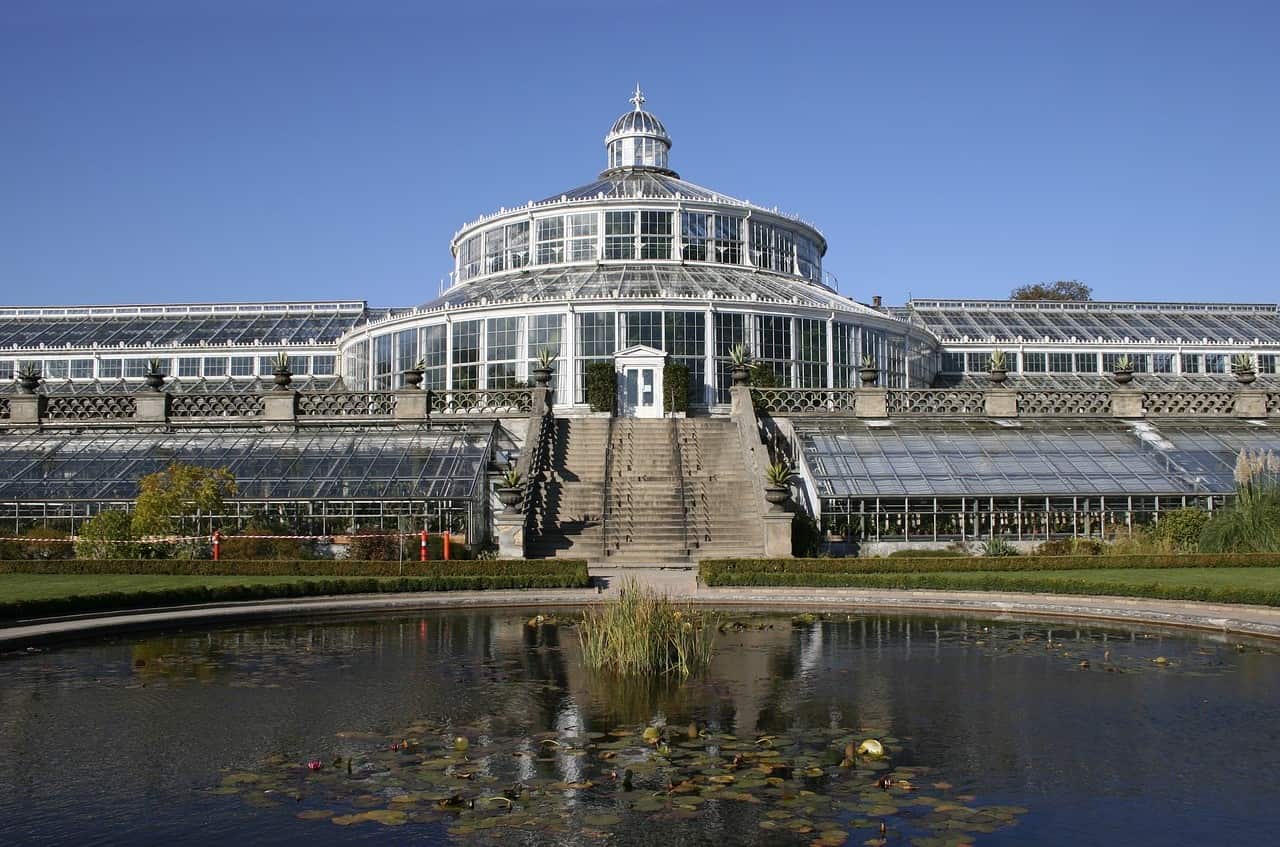
The gardens are well-planned, with over 13,000 species of plants being tended to inside and outside 27 large greenhouses.
You’ll also find wildlife, pathways, rock gardens, a lake, and a cafe.
All glass buildings are free to enter except the Butterfly and Palm Houses.
It’s recommended that everyone climb the cast iron white spiral stairs at the Palm House for an amazing view.
Kastellet
Kastellet means citadel, meaning this is a fortress.
The history of this historic fortress being in 1626 when construction began under the commission of King Christain IV.
It was meant to protect Copenhagen from invasions from the water.
Over the years, additions and modifications were made, resulting in borders that make it star-shaped.
The fortress is made up of a number of features and structures including the King’s Gate and its drawbridge, the church of St. Alban, the Commander’s House, and the Arsenal (which is today a Museum).
There’s also a windmill, paths, and trees, all surrounded by water.
Gefion Fountain | Gefionspringvandet
This fountain is one of Copenhagen’s most famous landmarks. It sits close to Østerbro Harbor in Chruchillparken, not far from the Little Mermaid Statue.
The statues in the fountain are of the Norse goddess Gefion and her four sons, represented by the four oxen pulling her in a chariot.
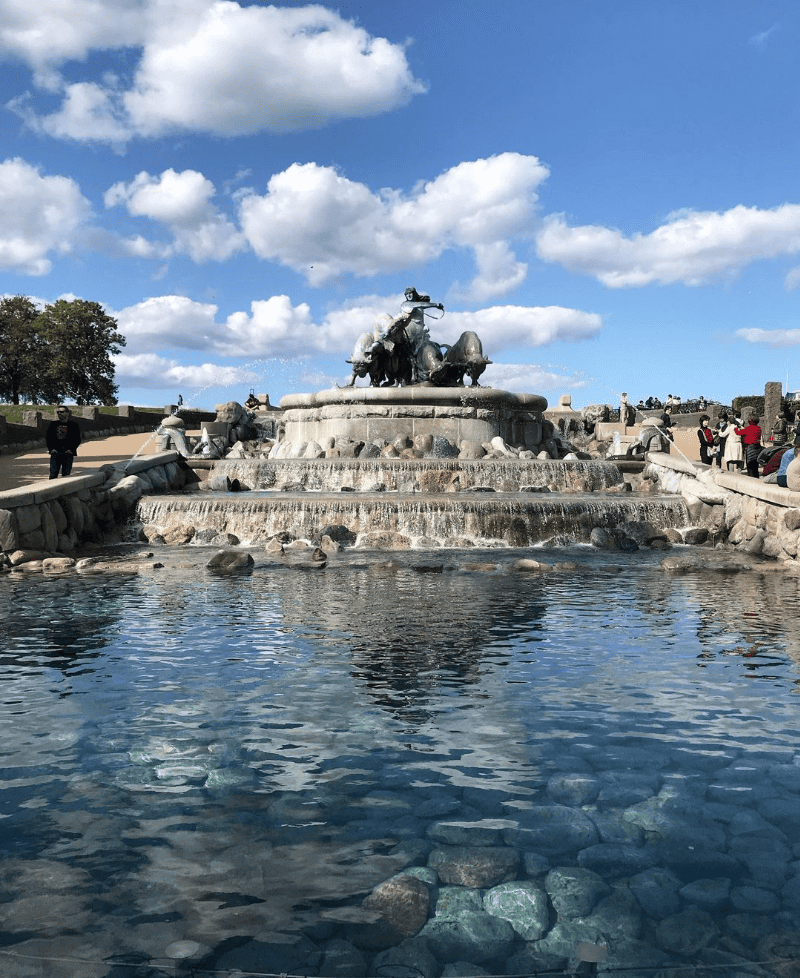
The myth said that they created Zealand, the largest island in Denmark, with her and her sons plowing land so deeply the island appeared.
Legend said she’d been offered all of the land she was able to plow in one night, by the King of Sweden, and this was the result.
Note that you'll find some of the day 2 locations in our free Copenhagen Renaissance walking tour.
COPENHAGEN: Day 3
Here is the itinerary for your third day in Copenhagen.
- Christianhavn including Christiana Freetown
- Church of Our Savior Spire
- Amalienborg Palace
- CopenHill
- Ny Carlsberg Glyptotek
- City Hall Square
- Tivoli Gardens
Our free walking tour of Christianhavn would give you a nice close-up of the interesting and bohemian Christiana Freetown neighborhood.
Christianshavn and Christiana Freetown
The neighborhood covers some artificial islands. It was first established as part of the fortifications of the city.
There are affluent neighborhoods, renovated warehouses, churches, and a number of creative institutions.
You'll also find cafes, restaurants, shopping, and live music.
One part of the area is made up of Christiana Freetown, a self-proclaimed autonomous neighborhood that was established in 1971.
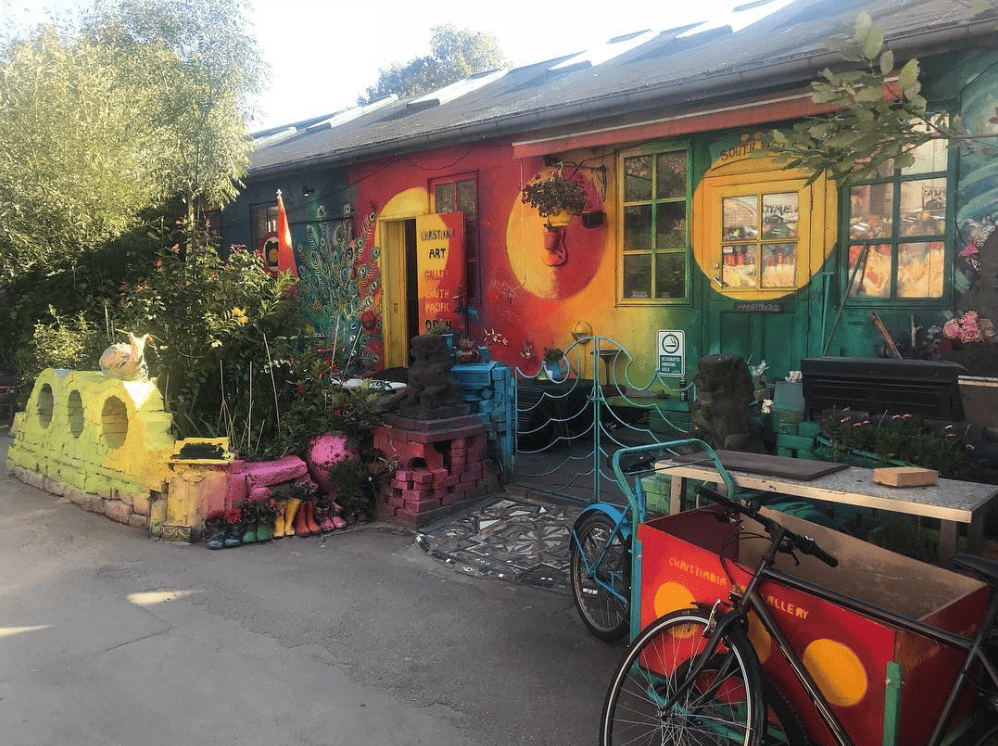
Hippy squatters and activists used an abandoned military base to set up an alternative community, one that was liberal with counterculture values.
Their focus was on communal living, individual freedom, and environmental sustainability.
Today it still functions under its own rules, with decisions made through consensus building by its almost 1,000 members.
As you might expect, it looks quite different from the rest of Copenhagen. You'll find many buildings covered in murals and colorful paint.
However, there are a few rules in this part of the city, including NO PICTURES. They also don't allow cars.
You can find tours of Christianshavn here.
Church of Our Savior Spire
In 1617, Christain IV planned the neighborhood of Christianhavn and decided it was in need of a church.
It took many years and more than one ruler and architect to complete the project.
This Dutch baroque architectural-style church has an unusually designed black and gold spire tower that reaches almost 295 feet (90 meters) in the sky.
Atop sits a globe in gold with the figure of Christ Triumphant carrying a banner above that.
The church also has 12 tonnes of bronze carillon bells that chime out, a magnificent organ, religious artwork, and frescoes.
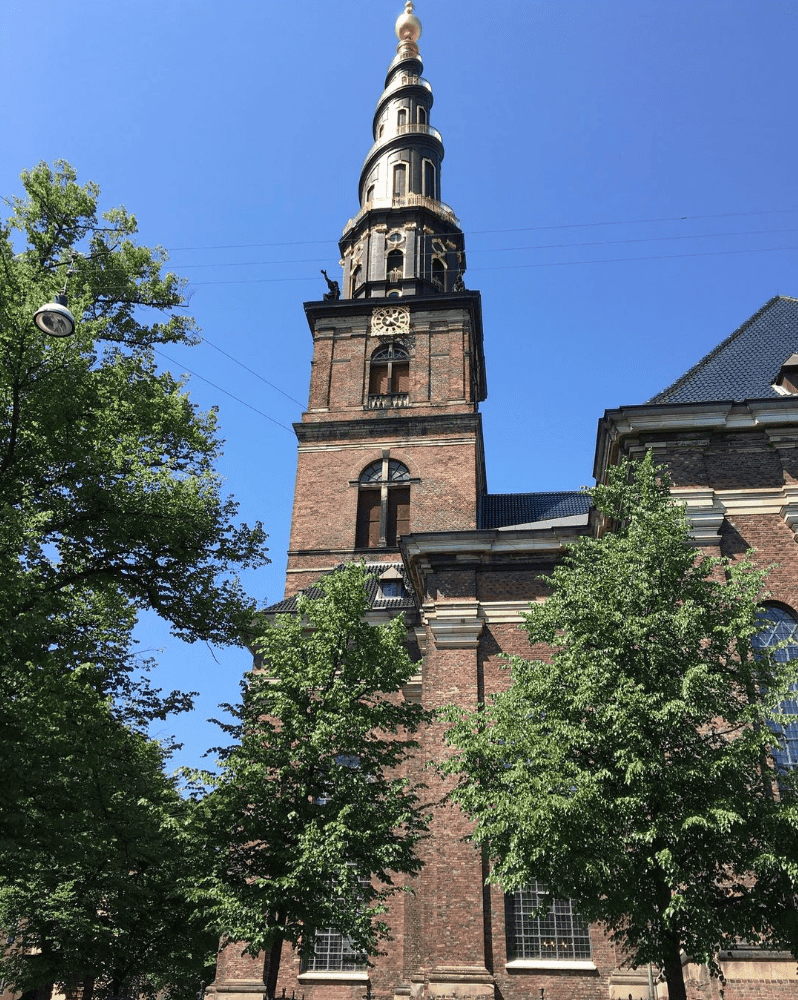
Although many people think the church is ugly, it's made an impression on authors and painters who have included it in their works.
The Tower is open most of the year, closing through all of January and most of February.
There are 400 steps to the top, something hundreds of thousands of visitors climb each year to get some of the best views of Copenhagen.
Because of the crowds and limited space, it's suggested that tickets be booked to avoid waiting.
Note that the Church is included in The Copenhagen Card.
Amalienborg Palace | Amalienborg Slotspad
This is the home of the Danish royal family.
Although it was originally built in 1750 for four noble families, it would eventually be purchased by the royal family, who have resided here for over 200 years.
The design of Amalienborg follows the Rococo architectural style.
There is an equestrian statue of the founder of the palace buildings, King Frederick V, at the centre of the square.
The four palaces that make up Amalienborg are named after some of its former residents: Christian VII's Palace, Christian VIII's Palace, Frederick VIII's Palace, and Christian IX's Palace.
Amalienborg is guarded 24/7 by the Royal Life Guards who march every day at 11:30 am from Rosenborg Castle to Amalienborg to perform the changing of the guard.
This is also the site of Amaliehaven, a two-level garden with several beautiful sculptures and a central fountain.
CopenHill | Amager Bakke
You may be wondering why you'd want to visit a waste-to-energy plant on the outskirts of Copenhagen.
The reason is because of the unique and visually striking design of the plant, the building of which took over ten years and ended up winning a number of awards.
The top of CopenHill looks like a green ski slope and in fact, it is one.
A special ski surface lines it, allowing folks to ski or snowboard down at any time of year.

There are also trails and staircases for mountain running or hiking and the world's tallest climbing wall reaching 279 feet (85 meters).
For kids, there's a sledding hill and a Treasure Hunt with questions and a map.
For those who want to take pictures, you can walk up or there's a free elevator/lift that will take you to the top. If skiing, there is a cost.
Ny Carlsberg Glyptotek | Glyptoteket
This art museum was founded by Carl Jacobson the son of the founder of Carlsberg Breweries.
He was an art lover who wanted to share his collection with the world.
He hired an architect who was able to combine different architectural styles into one building, including Art Nouveau, Renaissance, and Ancient Greek, one that was recently modernized.
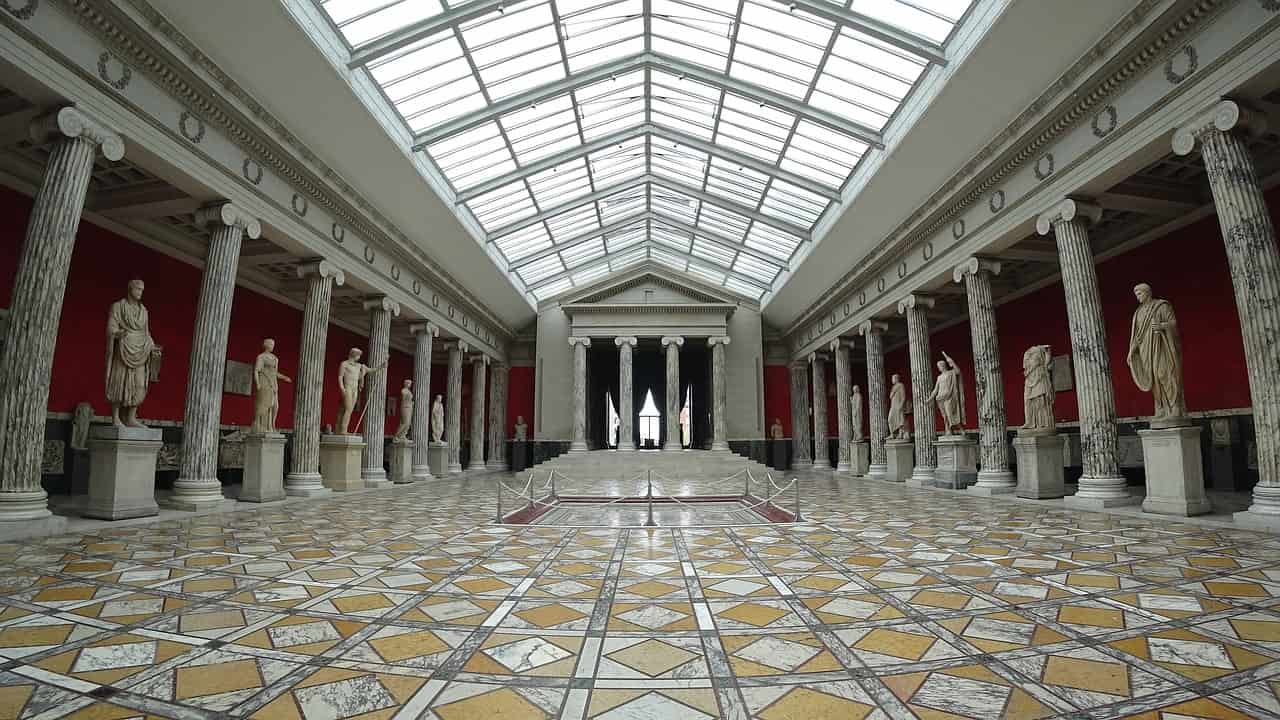
The museum, has both ancient and modern collections, with over 10,000 paintings, sculptures, marble statues, and other works of art.
Many visitors enjoy the winter garden, with benches dotted under 100-year-old palm trees, a small fountain, and a glass-tiled ceiling.
The museum is closed on Mondays but open the other days of the week.
Tickets are needed, unless you'd like to visit the last Wednesday of the month when it's free to enter.
The museum is included on The Copenhagen Card as well.
City Hall Square
City Hall Square sits between City Hall and Tivoli Gardens.
Many city festivals, concerts, and demonstrations are held here on the site of what used to be a hay market.
There are a few interesting things to see in this square, including the Dragon Fountain, a statue of Hans Christian Anderson, and the Lur Blowers bronze monument which towers to the left of City Hall.
There is also The Weather Girl statue that, until the 1990s, rotated according to the weather.
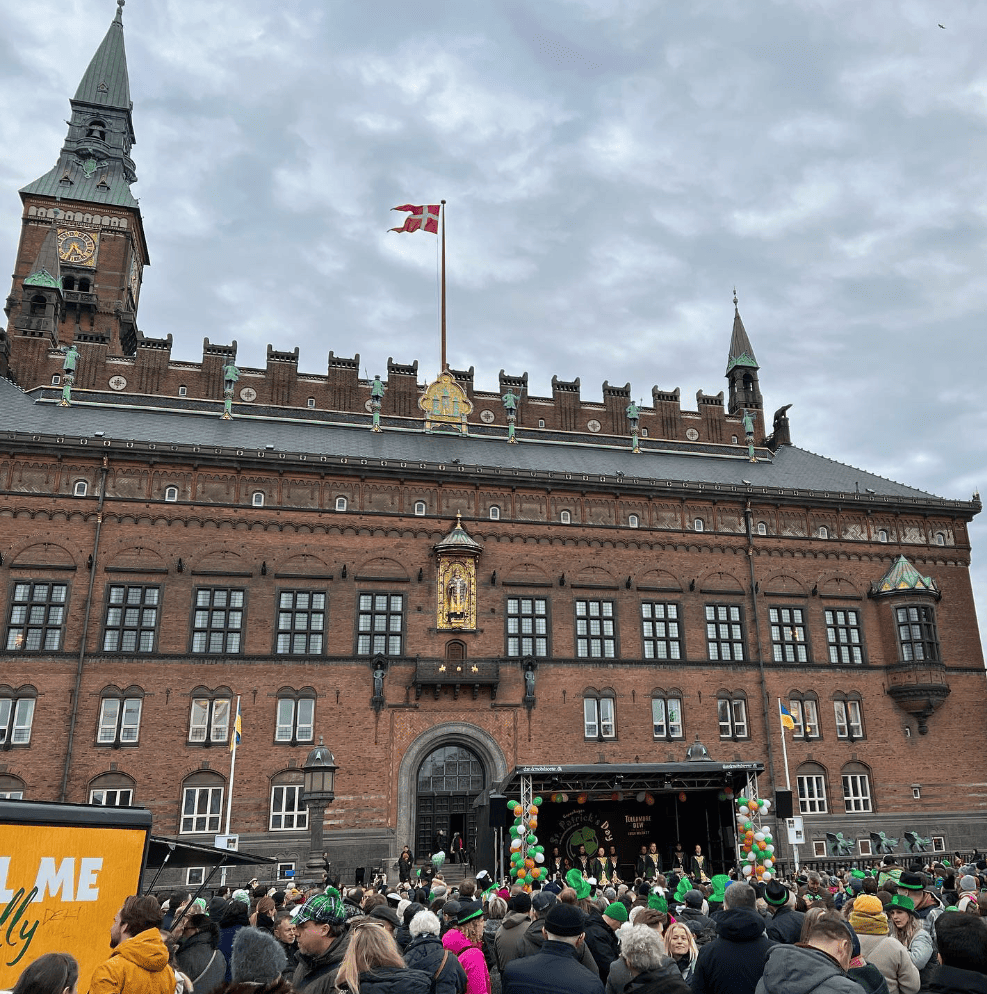
In 1894 the foundation for City Hall was laid, and the resulting building went up in the National Romantic style.
This is the headquarters of the municipality and Lord Mayor of Copenhagen.
One of its most notable features is a gilded statue of Absalon above the balcony and clock tower.
It is Jens Olsen’s World Clock, an astronomical clock that tracks both lunar and solar eclipses and the positions of stellar bodies.
It is also a perpetual calendar and tells the time.
Tivoli Gardens
A great way to end your trip is at the world's third-oldest amusement park having opened in 1843!
Over 4.5 million people visit the park each year making it the number one visited location in Denmark.
In addition to a variety of amusement rides such as roller coasters and a Ferris Wheel, there is a garden with beautiful floral arrangements, fountains, and a variety of foliage, an open-air theatre with live performances, and a wide selection of dining options.
During major holidays such as Christmas, the park is lined with special decorations, lighting displays, and other festive things to enjoy.
Tivoli is open for 11-13 hours a day, depending on the season
You can get tickets at a discount using either a Copenhagen tourist pass or a combo package or you can purchase individual tickets to Tivoli Gardens online and skip the ticket line.



